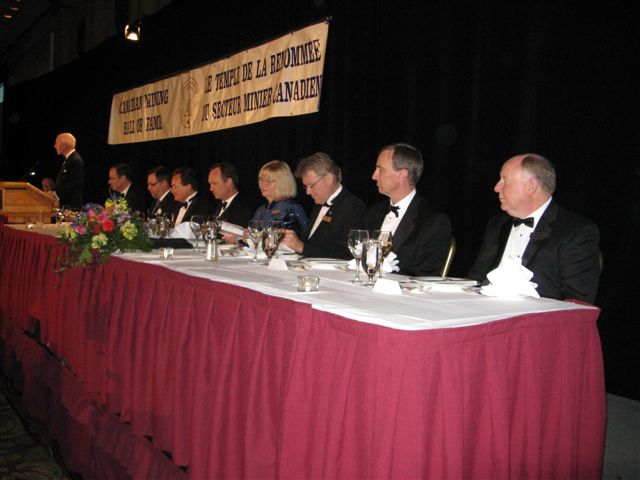CANADIAN PERSPECTIVE: Hall of Fame inducts four legends


Last week, on Jan. 15, the Canadian Mining Hall of Fame held its annual dinner to induct four of this country's legends in the industry.
The CMHF was established in 1988 at the urging of Mort Brown, former publisher of The Northern Miner. Among the 100-or-so people among the ranks are several that I have met over the years: Walter Curlook, Duncan Derry, Bob Hallbauer, Bill James, Franc Joubin, Bob Jowsey, Norm Keevil (senior and junior), Mike Knuckey, John Kostiuk, Viola MacMillan, Peter Monk, Paul Penna, Murray Pezim, Frank Pickard, Alf Powis, Harold Seigel, Merv Upham, and, of course, Brown.
I was privileged to have a front-row seat at the head table, and noted that this year's names were familiar to me. This was an opportunity to honour four men during their lifetimes, rather than posthumously as has been the case with many inductees at previous dinners.
Digger Gorman is a gifted educator, much loved by those he set on the road to mineralogy and geology. Born in 1922 in Fredericton, he earned a BSc in New Brunswick after a stint in the Canadian Navy. He studied economic geology at the Royal School of Mines in London, U.K., and earned a PhD from the University of Toronto in 1957. He taught mineralogy for the next 41 years. His enthusiastic students learned both the rigorous analysis of minerals and the pleasure that comes from solving geological puzzles.
Born in 1938 and educated in France, Bernard M. Michel led Cameco Corp. for 15 years. He steered the uranium producer though a merger, restructuring, privatization, global expansion and diversification into gold. He played what has been called a visionary role in the uranium and nuclear industry, participating in the most significant nuclear disarmament agreement in history.
Roman Shklanka, Canadian born in 1932 and educated in Saskatchewan, is best known for his global exploits. He helped find and develop successful mines on several continents. He earned a doctorate at Stanford University, then went to work in the field first for the Ontario Department of Mines and then for Placer Dome. He had a hand in the Porgera and Misima deposits in Papua New Guinea, the Kidston gold property in Australia, the Omni gold project in Guyana, the Bulyanhulu gold project in Tanzania. He was also involved in the acquisition of the Granny Smith and Osborne mines in Australia. Since leaving Placer Dome in 1990, two juniors he started have been bought out by international players: Sutton Resources which held the Bulyanhulu deposit and Canico Resources which owned the Onca Puma nickel deposit in Brazil.
Last but not least, Grenville Thomas was welcomed into the Hall. Born in 1941, he began his career at age 16 in a Welsh coal mine. He graduated from University College, Cardiff, in 1964, and moved to Canada. He worked for Falconbridge in both Sudbury and Yellowknife. In 1975 he founded Highwood Resources, the company involved in the discovery of the Thor Lake rare metals deposit. In 1980 he founded Aber Resources, famous now for its share of the successful Diavik diamond mine in the Northwest Territories and ownership of renowned jeweller Harry Winston Diamond.
Together these four are an impressive group. Their induction into the CMHF gives the rest of us something to shoot for.
Comments